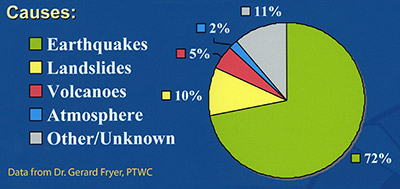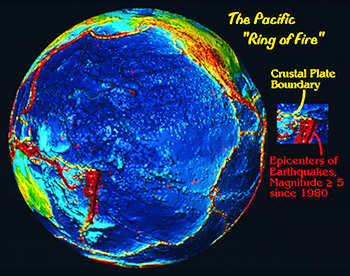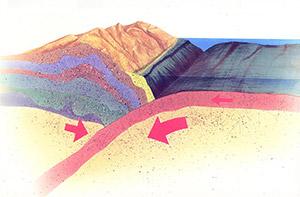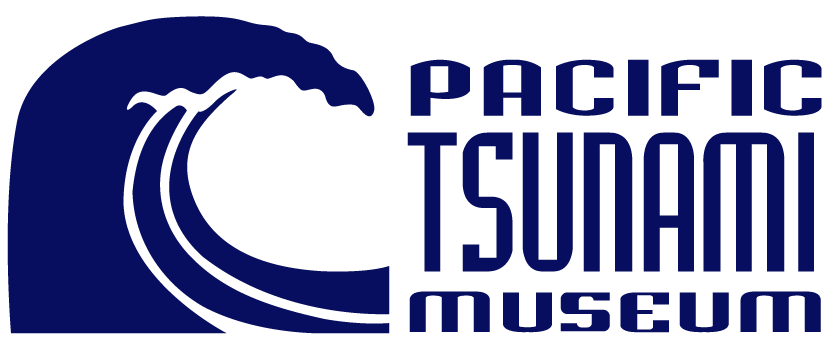What Causes a Tsunami?
What Causes a Tsunami?

Tsunamis are caused by violent seafloor movement associated with earthquakes, landslides, lava entering the sea, seamount collapse, or meteorite impact. The most common cause is earthquakes. See the percentages on the right for the geological events that cause tsunamis. Note that 72% of tsunamis are generated by earthquakes. A disturbance that displaces a large water mass from its equilibrium position can cause a tsunami.
Plate Tectonics

In order to understand the role of violent seafloor movement as a major cause of tsunamis, one needs to understand plate tectonics. Earth’s surface is made up of a number of plates that contain both the continents and the seafloor. They move relative to each other at rates of up to several inches per year. A plate boundary is the area where two plates come into contact. The way one plate moves relative to another determines the type of boundary: spreading, where the two plates move away from each other; subduction, where the two plates move toward each other, with one sliding beneath the other; and transform, where the two plates slide horizontally past each other. Subduction is the main cause of major tsunami events.
Ring of Fire
Tsunamis happen most frequently in the Pacific Ocean because of the many large earthquakes associated with subduction zones along the margins of the Pacific Ocean basin, which is called the “Ring of Fire”. Ninety percent of the world’s earthquakes occur along the Ring of Fire. There are subduction zones with associated deep-sea trenches off Chile, Alaska, Japan, and Indonesia, for example, that have produced large earthquakes and devastating tsunamis, many of which caused damage and loss of life in the Hawaiian Islands.
Subduction
Earthquakes that generate tsunamis most often happen where Earth’s tectonic plates converge, and the heavier plate dips beneath the lighter one. Part of the seafloor snaps upward as the tension is released. The entire column of seawater is pushed toward the surface, creating an enormous bulge. As the water flattens out, giant ripples race outward.Landslides, Volcanic Eruptions, MeteoritesSubmarine landslides, which often occur during a large earthquake, can create a tsunami. During a submarine landslide, the equilibrium sea level is altered by sediment moving along the sea floor. Gravitational forces then propagate the tsunami given the initial perturbation of the sea level. Similarly, a violent marine volcanic eruption can create an impulsive force that displaces the water column and generates a tsunami. Above water landslides and space borne objects can disturb the water from above the surface. The falling debris displaces the water from its equilibrium position and produces a tsunami. Unlike ocean-wide tsunamis caused by some earthquakes, tsunamis generated by non-seismic mechanisms usually dissipate quickly and rarely affect coastlines far from the source area.Come and visit the Pacific Tsunami Museum to learn more about the science of tsunamis!

Landslides, Volcanic Eruptions, Meteorites
Submarine landslides, which often occur during a large earthquake, can create a tsunami. During a submarine landslide, the equilibrium sea level is altered by sediment moving along the sea floor. Gravitational forces then propagate the tsunami given the initial perturbation of the sea level. Similarly, a violent marine volcanic eruption can create an impulsive force that displaces the water column and generates a tsunami. Above water landslides and space borne objects can disturb the water from above the surface. The falling debris displaces the water from its equilibrium position and produces a tsunami. Unlike ocean-wide tsunamis caused by some earthquakes, tsunamis generated by non-seismic mechanisms usually dissipate quickly and rarely affect coastlines far from the source area.
Come and visit the Pacific Tsunami Museum to learn more about the science of tsunamis!
